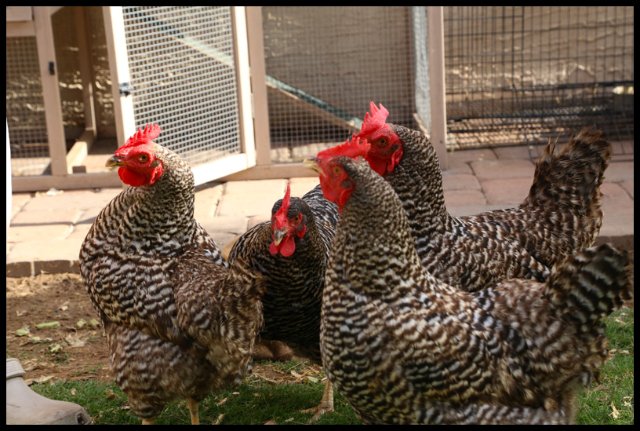But, as an adult, I live in the big city and almost always get my eggs at the grocery store (not nearly as tasty!). Recently, several of my friends decided to be urban chicken farmers so they would have fresh eggs and they occasionally share with me. Yep, even city-dwellers can have chickens in their yards. The town ordinance where I live allows up to five chickens on ⅛-acre lots with larger lots allowing more chickens (up to about 50 on a one-acre property).
My friends all claim that their chickens (or "girls" as they call them) make a variety of sounds (clucks, trills, coos,...) and that they can tell when the "girls" are upset or making happy sounds. Mostly I smile and nod as I listen.
But this week I read an article (The Wall Street Journal, May 4, 2015) that affirms their claims and takes it a step further. Researchers and engineers at Georgia Institute of Technology are working to digitally detect the sounds unhappy chickens make. Why, you ask?
Georgia is the nation's largest producer of chickens. Knowing when chickens are getting sick, are too hot or cold, or just get their feathers ruffled about something affects poultry farmers' bottom line as unhealthy or discontent chickens don't fatten up as quickly or lay as many eggs.
Georgia Tech students developed a recording app for smartphones called SCAR (Sick Chicken Audio Recorder - yeah, I have no words...) that they used to collect over 1,000 hours of chickens clucking while content, sick, crowded and cold. Then researchers and engineers did their geeky thing ending up with digitized clucks using a method similar to the way a smartphone analyzes human voices asking what Siri is wearing.
The poultry industry is excited to put this technology into practice. They claim it will be a faster, cheaper and more accurate way to monitor flocks than the current method of having humans walk through hen houses (which can hold 50,000 chickens) listening for disgruntled chickens.
Hmmmm. I guess I'm the one with egg on my face.



No comments:
Post a Comment